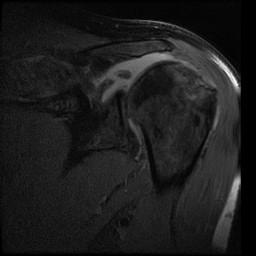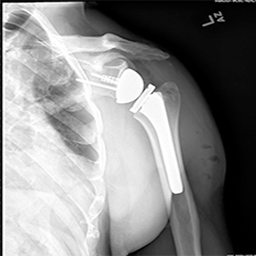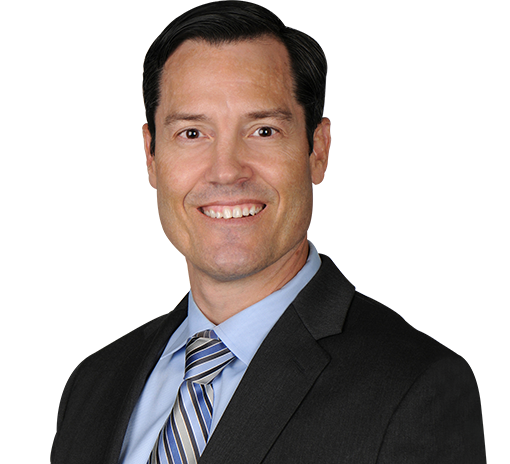The Rotator Cuff
The Normal Rotator Cuff
The rotator cuff consists of four muscles that connect from the scapula to the humerus bone and form a cuff around the ball and socket. These muscles help the ball move on the socket, but also compress the ball into the socket to maintain a stable fulcrum for rotation when the shoulder moves.
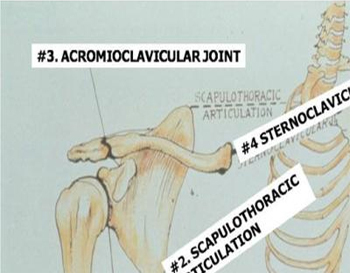
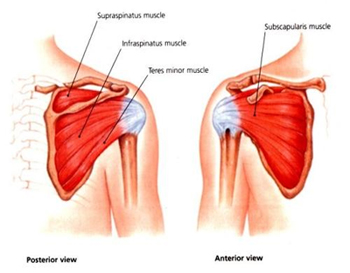
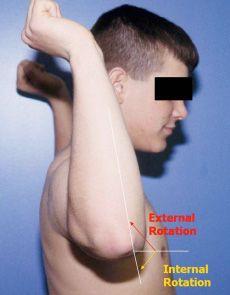
The rotator cuff enables several forms of motion, including flexion (raising your arm over your head), internal rotation (moving the hand inward from the side of the body thus allowing you to put your arm behind your back), and external rotation (moving the hand outward from the side of the body thus allowing you to put your hand behind your head).
Impingement
Impingement is mechanical compression of the rotator cuff against the acromion bone. This condition may occur with or without the development of a rotator cuff tear.
When the arm is raised with repeated activities such as swimming, tennis, or work, there may be irritation of the bursa, a lubricating tissue layer between the acromion bone and the rotator cuff. If this bursal layer swells due to injury, it may be compressed between the rotator cuff and acromion.
Occasionally, a bone spur may form and contribute to “impingement” or compression of the rotator cuff.
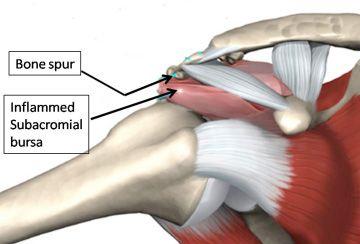
Treatment
Arthroscopy: Surgical removal of the bone spur is performed at the time of shoulder arthroscopy using a special high speed burring device. Removal of the bone spur, along with removal of the inflamed bursa, increases space available for the rotator cuff tendon to move with overhead motions. A new, uninflammed bursa will grow back to replace the inflamed bursa that is surgically removed.
If there is no need for a tendon repair and only the inflamed bursa and a bone spur is removed, then return to daily use of the arm and sports participation may be on the order of several weeks.
Rotator Cuff Tear
What is it?
If you have pain, but not much weakness, it is likely that the tendon is irritated but not torn. This is called a bursitis. The combination of bursitis and irritation of the tendon is called “Impingement Syndrome” (see above).
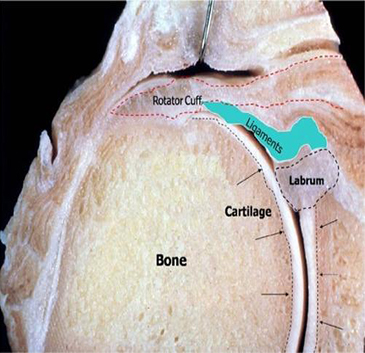
When the tendon is torn, there will usually be pain, as well as weakness. Another common complaint is night pain that interferes with sleep. The most common tendon that tears is the supraspinatus, the tendon on the top of the ball and socket.
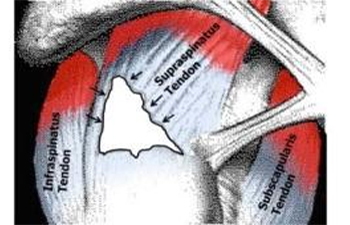
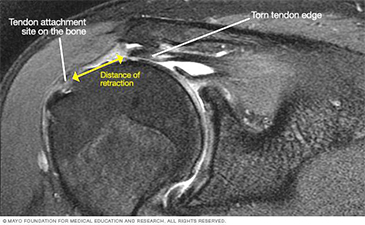
Treatment
Physical Therapy: a program of therapy supervised by a therapist may help improve your strength and reduce your pain.
Anti-inflammatory Medications: Your physician may prescribe medications to reduce inflammation. These will usually help your pain and facilitate physical therapy.
Cortisone Injection: In some cases, an injection of cortisone may be recommended. This will usually give excellent pain relief. The benefits may include improved ability to sleep at night and improved effectiveness of a physical therapy program. Even if the injection only provides temporary pain relief, it will also help confirm the diagnosis.
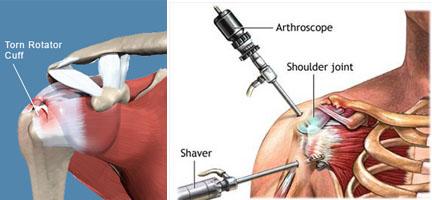
Surgery: In most cases, repair of the torn tendon can be performed arthroscopically with the patient going home the same day as the surgery.
Recovery: After surgery, the shoulder is usually protected in a sling for 4-6 weeks. A therapy program is then performed under the supervision of a certified physical therapist. Return to sports participation may take 4 months or more from the date of surgery.
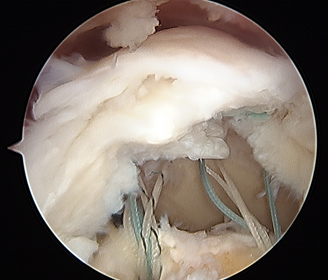
Before
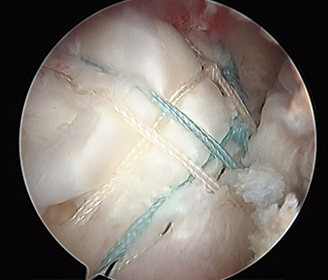
After
Arthroscopic images demonstrating massive rotator cuff repair of three tendons including subscapularis (SSC), supraspinatus (SP) and infraspinatus (IP). Utilization of a “Double Row Repair”. The most stable and biomechanically strong repair available.
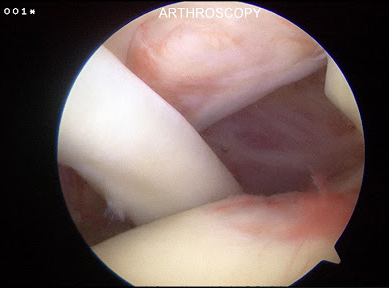
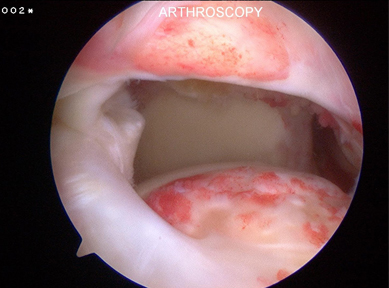
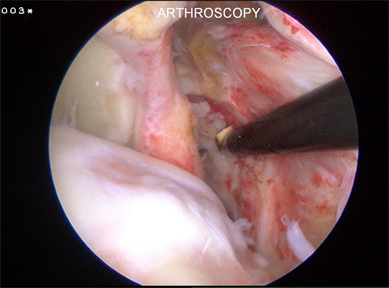
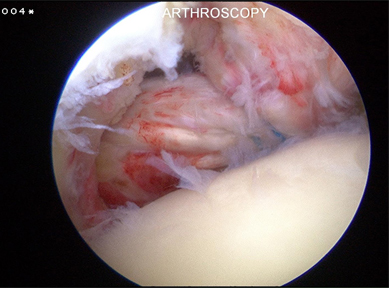
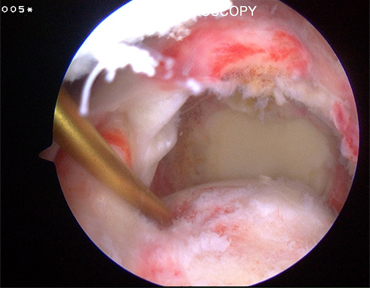
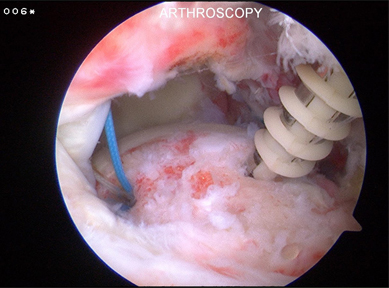
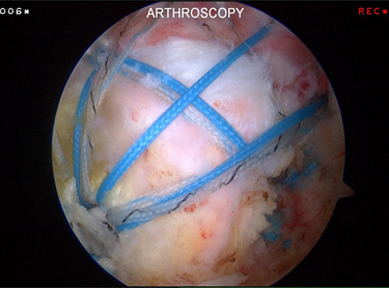
Irreparable Rotator Cuff Tear
What is it?
Tendons that are torn chronically (over many months or years) may become irreparable through several mechanisms.
- The tendon tissue becomes thin, weak, and tears easily when the surgeon attempts a repair.
-
The muscle to which the tendon is attached becomes atrophied (smaller) and it actually changes in terms of its internal structure. Normal muscle is composed of small bands called muscle fibers. These are the parts of the muscle which contract and create the power of the muscle. As the muscle contracts it shortens and pulls on the tendon which is attached to bone. This makes the joint move. The power which is created depends on the ability of the muscle to contract and shorten.
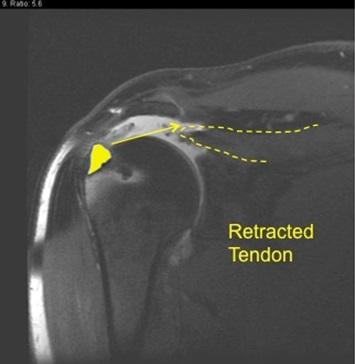
- When the tendon is torn chronically the muscle actually loses this ability as it becomes fibrotic (scarred) and infiltrated with fat. Therefore, it is no longer a powerful muscle that can contract and create joint movement.
Treatment
Physical Therapy: In patients who have weakness which is not severe, physical therapy may improve pain and function by maximizing effectiveness of remaining muscles of the rotator cuff. Some patients actually may improve so they can place their hands overhead and have minimal pain.
Arthroscopic Debridement & Biceps Tenotomy: Arthroscopy allows access to the shoulder joint through small incisions and may be performed as an outpatient procedure. Debridement means removal of loose tendon tissue and inflamed bursa which may be rubbing and causing pain. The biceps tendon is also often degenerated and as it slides up and down in the front of the shoulder it may be a cause of pain. Release of this tendon has been shown to relieve pain in many cases and its release does not compromise shoulder function.
Arthroscopic or Open allograft (cadaver tissue) or xenograft (animal tissue): This is a method of treatment with variable outcomes as reported in the literature.
Arthroscopic Partial Repair: This is generally reserved for patients who have reasonable function and are not profoundly weak.
Arthroscopic Suprascapular Nerve Release (with or without rotator cuff repair): This is a method generally reserved for patients with pain felt over the top and back of the shoulder and in absence of another explanation for the pain.
-
In some patients the suprascapular nerve may be tethered by retraction of the rotator cuff tendon tear. Its release has been shown to give relief of pain and improve function in select patients. The nerve may also be decompressed where it runs underneath a tight ligament into the shoulder.
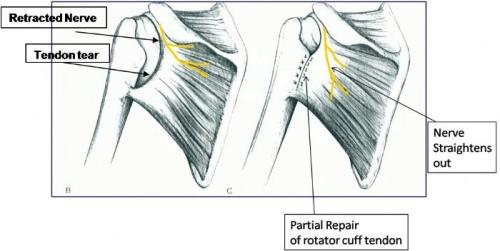
Tendon Transfer: This is a relatively rare procedure reserved for those patients with weak shoulders which are not so weak as to appear almost paralyzed (pseudoparalysis). This procedure involves extension and transfer of the trapezius tendon from the back of the shoulder. This requires an incision in the back of the shoulder as well as the top of the shoulder.
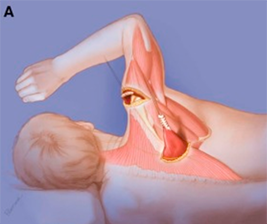
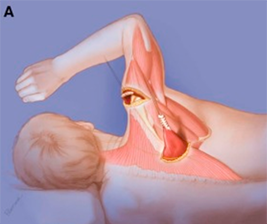
Post op:
- It is necessary to wear a special brace to keep the arm in a position away from the side so the tendon transfer can heal over 6 weeks
- A prolonged therapy program is required after surgery in order to train the tendon to function properly. This includes Biofeedback training
- The gains from the tendon transfer procedure may take up to one year to realize.
Tendon Transfer for Irreparable Subscapularis Tendon Tear: In these cases, the rotator cuff tendon in the front of the shoulder is torn and irreparable. In some cases, transfer of the pectoralis major muscle will improve function and alleviate pain.
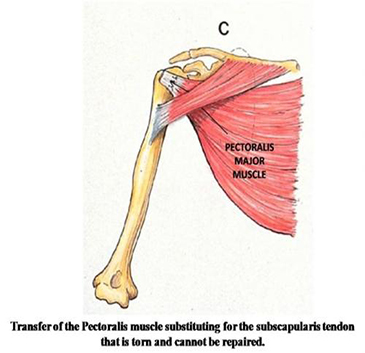
Reverse Prosthesis: In patients with an irreparable rotator cuff tendon tear and weakness so severe that it is similar to a paralysis of the arm, a reverse prosthesis can be placed, which will not only facilitate improvement of motion, but also relieve pain. This procedure basically provides a fixed fulcrum for rotation of the arm by reversing the position of the ball and the socket.
